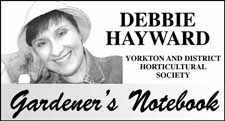If you love to read, you'll know what I mean when I say that some books are like old friends. Even if you haven't seen them for a while, when you do find each other again, you can enjoy their company right away. Such a book is one that was in my Mom's kitchen for many years, and now I treasure it in our home. It's called "The Pleasure Of Herbs" by Phyllis Shaudys. The subtitle is "A Month by Month Guide to Growing, Using and Enjoying Herbs". While there may not be much growing of herbs in our climate in the winter, we can still enjoy their flavors, scents, and beauty when they are dried.
Skimming through, I found the chapter devoted to December, and a paragraph caught my eye. It was titled "Advent and Manger Herbs", and I'll share some of that with you now. It talks about a woman who makes an Advent wreath out of living herbs. Some herbs were new to me, but you might be familiar with them. One of the herbs listed was juniper, to represent life and hope. It said that juniper protected the Holy Family as they fled Herod's soldiers. Costmary (chrysanthemum balsamita) was used by Mary Magdelene to make ointment; ( this herb was new to me, but I read that it was also called Bible Leaf, because pioneers used it as a bookmark in their bibles). Back to our wreath: rue chases away evil and represents virtue; sage stands for health and happiness at home; thyme is for bravery; and rosemary for care, because it was a bush that did not rustle and "stayed silent" as the Holy Family fled from Egypt. Fragrant lavender reminds us of cleanliness and virtue; and myrtle, well known to many of us, represents love and happiness.
What an interesting idea! While it would be a project that would require some definite advance planning and transplanting, we could easily choose some of these herbs right from our own gardens. I think for myself, I would make the wreath out of dried herb stems, because it love the soft, muted colors of the dried plants. I would use rosemary, "for remembrance" as Shakespeare described it; sage, one of my favorite herbs, because the scent of dried sage seems as mellow and mysterious to me as frankincense; and lavender, a plant that I always wanted in my garden patch from the time I was a child. I loved the pungent aroma, even then. I think I would also add a sachet of cloves, often associated with Easter food because the whole clove looks like a nail from the cross.
Also in the December chapter of the book was this little suggestion: that if we find real licorice sticks, they would be perfect for a gift in a Christmas stocking. The licorice root is 52 times sweeter than white sugar, but it is the only sweet that can quench our thirst. It will even ease a sore throat! I myself have never seen licorice root, but that's something we can keep on our "look for this" list!
You might think that the Yorkton and District Horticultural Society is sitting back and relaxing now that winter has arrived. Not so! Just this week, we had a meeting to plan out speakers and topics for the coming year, and though I won't tell you what they are, I will tell you that they will be very interesting! If you are not yet a member but are thinking about joining the group, please do! It's a great way to meet gardeners at all levels of gardening; and as I told someone just the other day, for as many gardeners as we have in the club, that's how many gardening styles there are. Some plants large gardens, some plant their gardens in a flowerpot. It doesn't matter! The idea is to enjoy plants and all the gifts they bring to us. So keep that in mind, and think about joining us next year.
Till next week, I send you a bouquet of fragrant rosemary and sage - herbal ways to say "have a good week!".




